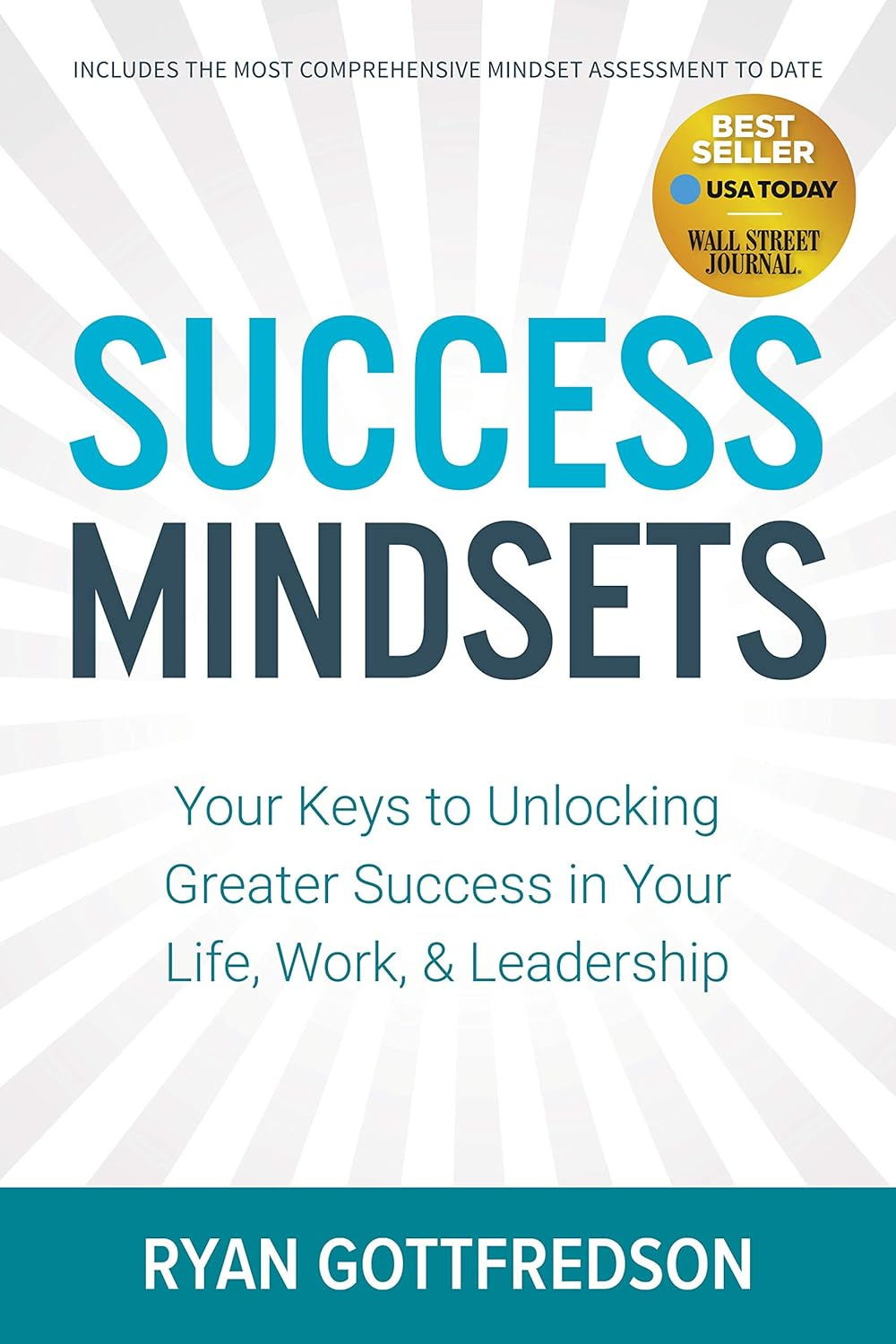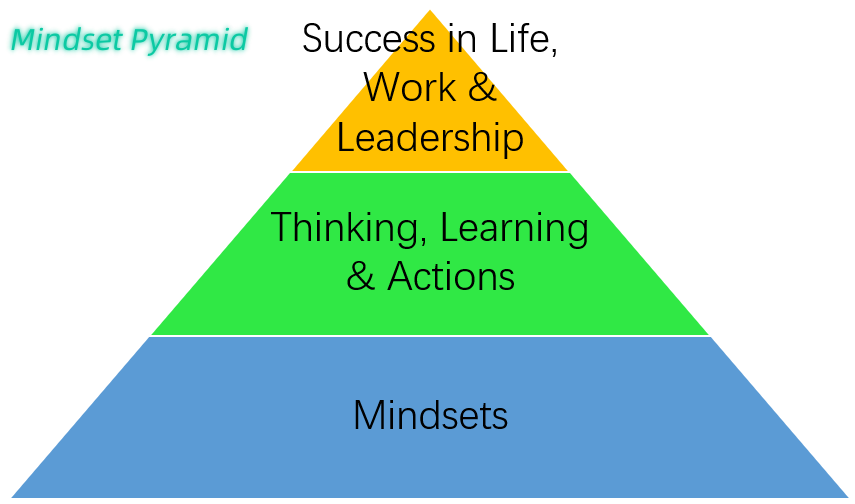Unlocking Life's Success Codes: Are Your Mindsets Limiting You?
Discover the four transformative mindsets that shape your daily reality. Are you ready to break free?
Good afternoon, friends! Welcome to the ReadVault Club. I'm Tom Niklas, a seasoned writer and book reviewer. Please subscribe to me and join us in reading 52 books a year together.
Today, we will discuss a book that is highly relevant to everyone. It's called "Success Mindsets: Your Keys to Unlocking Greater Success in Your Life, Work, & Leadership."
We've discussed the book "Mindset: The New Psychology of Success" before, right? That book told us about two types of mindsets – the fixed and the growth mindsets. But are those the only two mindsets that people have? Are there other different mindsets? This book provides a detailed analysis of different mindsets.
Read my another book review mentioned fixed mindset and growth mindset
The Power of Growth: Does Your Mindset Limit or Liberate?
·We all face challenges in life. Do you believe your abilities are fixed, or can you cultivate talents with effort?
Do you all know what a mindset is?
A mindset is the filter for our mental energy. We need to do many things every day, and over 90% of our decisions are made unconsciously.
Think about it, how many decisions do you make in a day? Some might say 10, 20, or 100. Someone did a fascinating study and found that we usually make over 30,000 daily decisions.
It's over 30,000 – starting from the moment you wake up, deciding whether to wash your face or brush your teeth first, what to have for breakfast and which brand of toothpaste to use – you're making choices right from the beginning. And we keep making choices throughout the day until we go to sleep. More than 90% of the decisions we make occur on a subconscious level.
So what filters those subconscious choices? What determines our decision-making process? Our fundamental mindset shapes it. Our mindset dictates most of what happens in our daily lives.
One image that had a significant impact on me is called the Mindset Pyramid. We can see that every day, we face three layers of issues. The bottom, the thickest layer is our mindset. The middle layer is our thinking, learning, and actions – our cognition. Success in life, work, and leadership sits at the top of our priorities.
Think about this pyramid. If you want to move it, if you want to shift and change your life, which part should we move first? Many of us often put a lot of effort toward the top two layers of our thinking, learning, actions, and success in life, work, and leadership.
When you finally manage to drag those top two layers forward – for example, attending a two-week training, spending a lot of money, and coming back feeling confident and pumped up – you'll realize the bottom mindset layer hasn't moved. It's like a ship blown by the wind to one side, but the anchor hasn't moved. Can you imagine what will happen in a couple of days? The top two layers will naturally come back because they're connected.
The right way to create lasting change is to shift our mindset layer first. Once we find a way to change our mindset and create that shift, our thinking, learning, actions, and success in life, work, and leadership will naturally follow. That's why mindset is so important – it's the Mindset Pyramid.
There's a saying that the solution to a problem is always outside the problem.
Why is that? What's inside the problem? The inside is the top two layers – what we can see with our eyes. We think if we just solve that issue, everything will be fine, right? If we just change the person, process, or add a new rule, many parents think if they just take away their kid's phone, everything will be fine. Therefore, we put in a lot of effort to change those top two layers. Those are the insides of the problem.
But the true essence of solving a problem comes from the outside – what isn't visible as the problem itself. That's your mindset. So you need to shift that mindset, and all the changes will happen.
Don't underestimate that 90% of our behaviors are automatically filtered by our mindsets. So we need to make that 90% of unconscious, automatic behaviors more positive. That's the most important reason for us to learn mindset adjustment in this book.
Fixed Mindset vs. Growth Mindset
Fundamentally, mindsets can be categorized into four groups that correspond in pairs. The first group is the one you're all familiar with - we don't need to spend too much time on it since we devoted an entire book to it before. This is the fixed mindset and the growth mindset from Carol Dweck's highly influential book "Mindset."
She divides people into two types: those with a fixed mindset, and those with a growth mindset.
What's the core difference?
People with a fixed mindset more focus on their image, evaluations, and performance, while those with a growth mindset value growth, learning, and challenges more.
So for someone with a fixed mindset, the most important thing in life is proving themselves, right? It is crucial to evaluate themselves, so whatever they do, the first thing they think about is whether it's embarrassing or not, and how they rank compared to others.
Their whole life is spent comparing themselves to others, which leads to arrogance, diva behaviors, lack of integrity, and avoidance of challenges since it's a fixed mindset.
But for people with a growth mindset, they believe the world is changing. They don't need to compare themselves to others in this life. The most important thing is whether they can improve and learn. Even if something is embarrassing, it's okay because they learned something new and are happy, right? That's the growth mindset.
Those with it tend to be more honest because they don't see the outcome of this particular interaction as vital. They believe there will be future opportunities to connect and collaborate, right? And they're more willing to accept challenges and failures because as long as they learn, that's enough.
There's an interesting experiment called the "Blurred Handwriting Test."
The author brought in two groups of students and first tested their mindsets through a questionnaire to see who leaned more fixed versus growth.
Then she gave both groups two sets of questions of similar difficulty. In the first part, both groups performed about the same since the questions were relatively simple. But in the second half, there was a twist - the questions had blurred handwriting, like a pirated book with typos and smudges, forcing you to guess the words. It was intentionally a low-quality set meant to test them.
The results were strikingly different this time. 72% of those with a growth mindset continued working on and solved those blurred questions, while only 35% of the fixed mindset group persisted.
Keep reading with a 7-day free trial
Subscribe to ReadVault to keep reading this post and get 7 days of free access to the full post archives.





